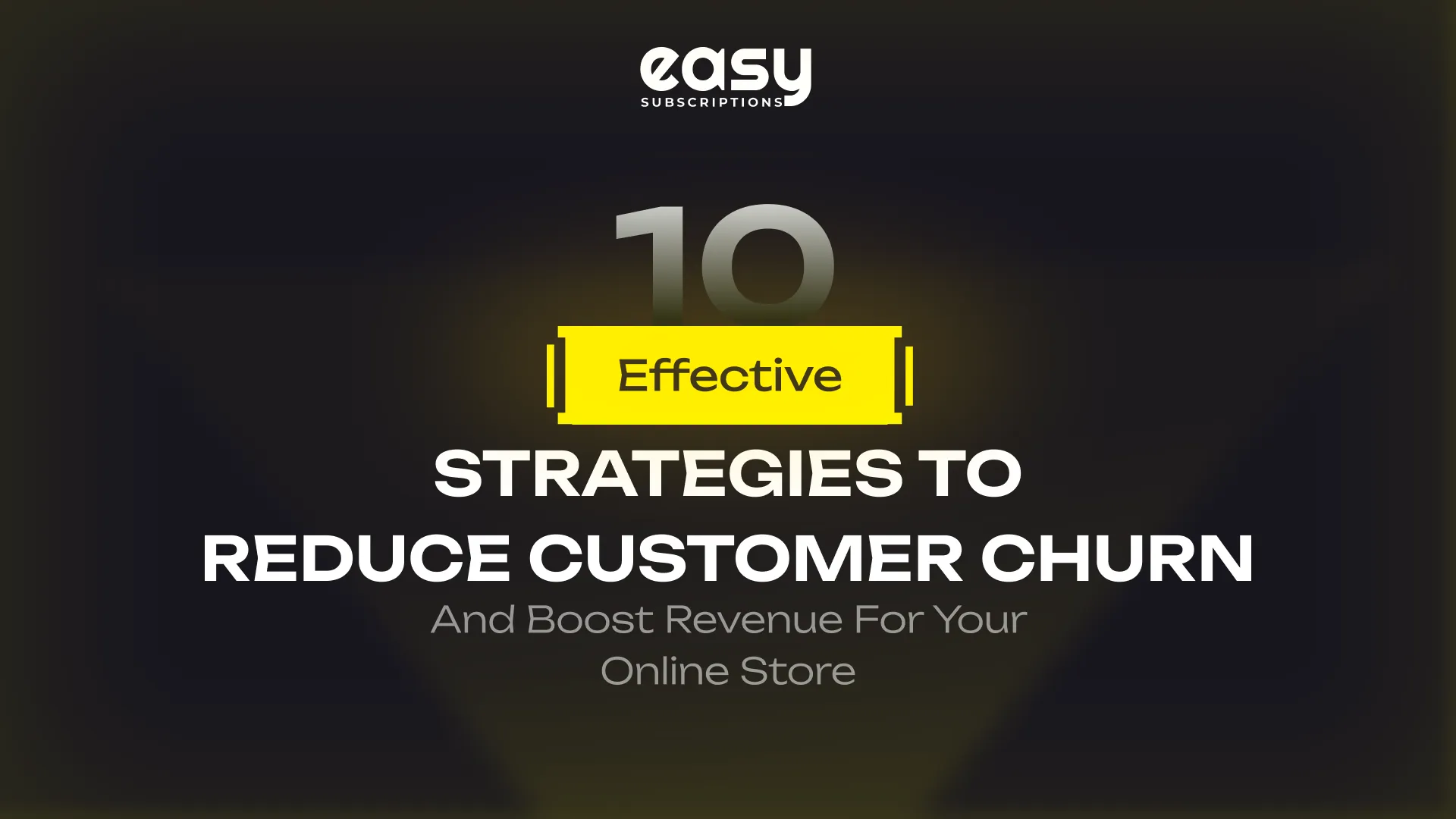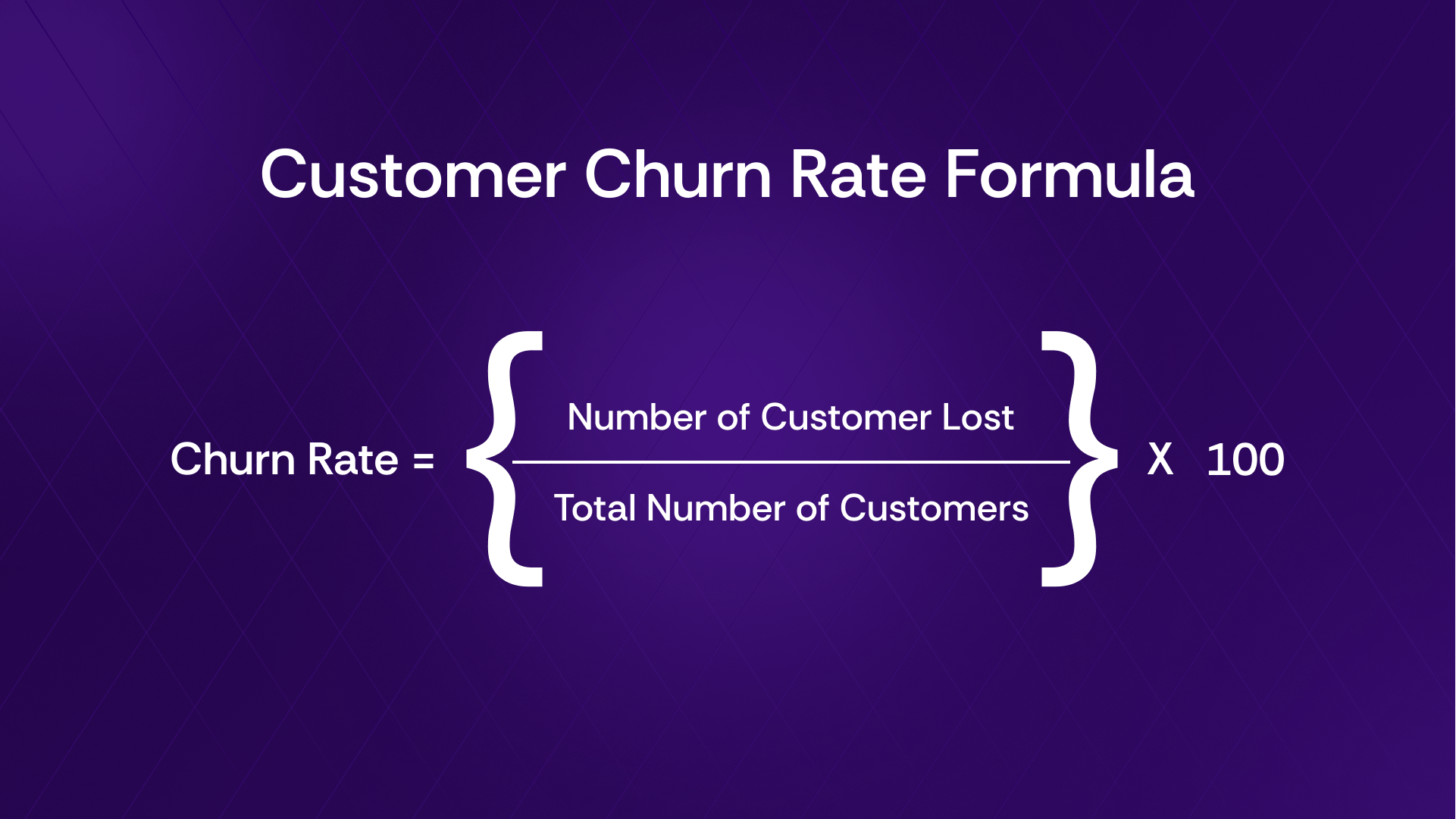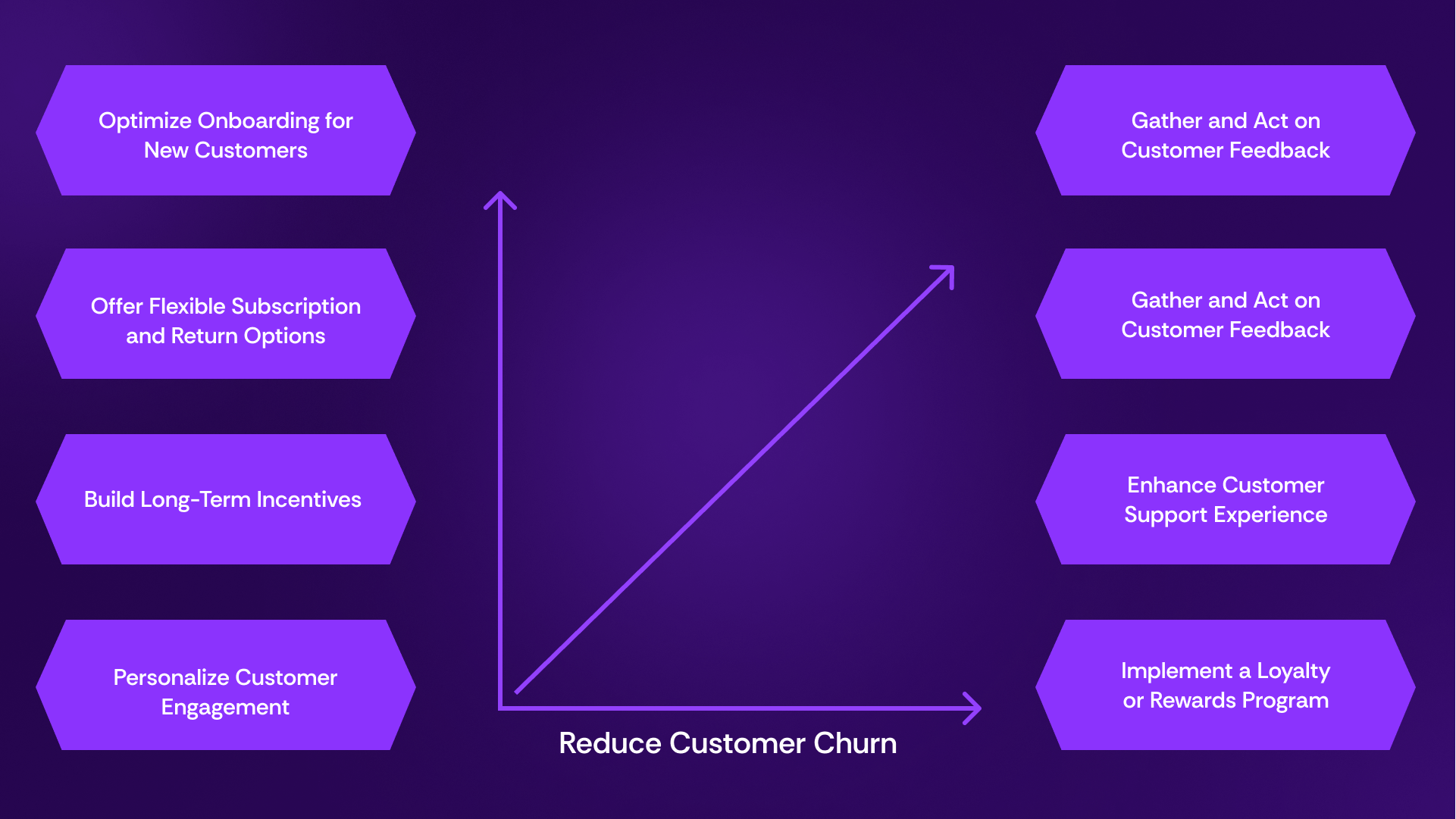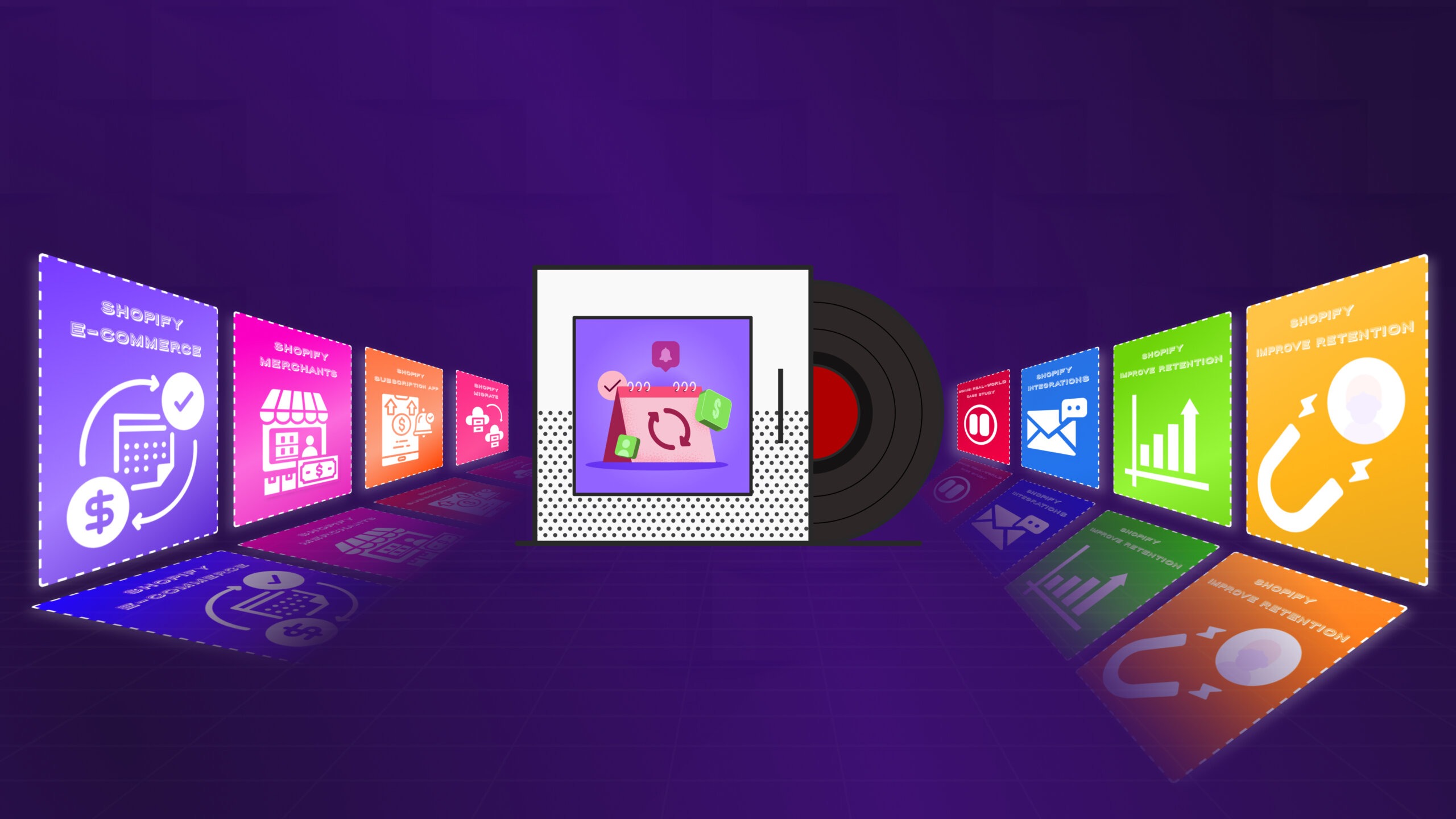
10 Effective Strategies to Reduce Customer Churn and Boost Revenue for Your Online Store
Published On: November 6, 2024 - 5 min read
Every lost customer isn’t just a missed sale—it’s lost trust, lost advocacy, and lost potential growth. In today’s hyper-competitive e-commerce world, where switching brands takes only a click, customer retention is the most powerful lever for sustainable profit.
Research from Bain & Company shows that increasing customer retention by just 5% can boost profits by 25% to 95%. That means every loyal customer you keep isn’t just staying—they’re helping your business thrive.
This guide reveals 10 powerful, actionable strategies to help you reduce churn, boost customer satisfaction, and grow long-term revenue for your online store.
Understanding Customer Churn
Customer churn refers to the percentage of customers who stop engaging with your business during a given time. High churn often signals that your customers’ experiences aren’t meeting their expectations.
Tracking churn helps you:
- Identify patterns of dissatisfaction
- Improve customer experience
- Predict future revenue trends
Simply put, understanding churn is the first step toward reducing it.

Why Customer Churn Matters
Losing customers hurts more than short-term sales—it damages your long-term growth engine.
Consider these insights:
- Acquiring a new customer costs 5x more than retaining an existing one.
- Existing customers spend 31% more and are 50% more likely to try new products.
- Up to 80% of future revenue often comes from just 20% of your loyal customers.
Reducing churn means lowering acquisition costs and maximizing the lifetime value of every customer.
Strategies to Reduce Customer Churn and Build Loyalty

1. Optimize the Onboarding Experience
The first interaction sets the tone for your relationship. A smooth onboarding process helps customers feel confident and supported—right from day one.
How to Do It:
- Send a warm, personalized welcome email with helpful resources.
- Offer video tutorials or quick-start guides to demonstrate product value.
- Host live demos or webinars for hands-on support.
Pro Tip: A strong onboarding experience can improve customer retention by up to 86% (Wyzowl).
2. Offer Flexible Subscription and Return Options
Flexibility builds trust. When customers feel in control, they’re far less likely to cancel or switch brands.
Best Practices:
- Allow customers to pause or modify their subscriptions easily.
- Create a simple return and exchange process that removes friction.
- Provide swap options so customers can change products instead of canceling.
Example: Dollar Shave Club retains members with easy subscription adjustments and product swaps.
3. Build Long-Term Incentives
Reward loyalty—it’s one of the easiest ways to make customers stay longer and spend more.
Ways to Implement:
- Use tiered pricing (longer commitments = better rates).
- Offer exclusive deals for returning customers.
- Celebrate loyalty milestones with gifts or discounts (e.g., anniversary perks).
- Try BOGO or gift-with-purchase promotions to increase repeat sales.
Stat: 57% of loyal customers spend more with brands they trust.
4. Personalize Customer Engagement
Personalization is no longer optional—it’s expected. Tailored communication makes customers feel seen, understood, and valued.
How to Personalize:
- Segment your audience by purchase history and behavior.
- Use personalized subject lines and dynamic product recommendations.
- Send targeted messages at key moments—such as post-purchase follow-ups or birthdays.
Fact: 80% of consumers are more likely to buy when brands offer personalized experiences.
5. Gather and Act on Customer Feedback
Listening is loyalty’s secret ingredient. When customers see their feedback implemented, they feel respected—and stay longer.
How to Leverage Feedback:
- Send post-purchase surveys to gauge satisfaction.
- Encourage product reviews for insights and social proof.
- Identify recurring themes and act quickly to address pain points.
Example: Glossier actively incorporates customer feedback into product development—deepening brand trust.
6. Elevate Your Customer Support Experience
Exceptional service transforms one-time buyers into lifelong fans.
Steps to Improve Support:
- Offer multi-channel support (live chat, email, social, and phone).
- Train your team regularly to maintain consistent service quality.
- Utilize a ticketing system to ensure that every inquiry is resolved.
Stat: Customers who receive excellent support are 89% more likely to repurchase.
7. Launch a Loyalty or Rewards Program
People love being rewarded. A well-designed loyalty program turns routine purchases into habits.
How to Do It:
- Create a points-based system (earn points for purchases, referrals, or reviews).
- Offer exclusive deals for members only.
- Celebrate birthdays or milestones with personalized perks.
Example: Sephora’s Beauty Insider Program drives repeat sales by rewarding engagement, not just spending.
8. Use Predictive Analytics to Prevent Churn
Data-driven decisions can stop churn before it happens.
Steps to Apply Predictive Insights:
- Monitor purchase frequency and engagement levels.
- Set automated alerts for at-risk customers.
- Re-engage them with personalized offers or win-back emails.
Did You Know? By 2025, 60% of B2C brands will use AI and machine learning to predict and reduce churn.
9. Track and Analyze Key Metrics
You can’t improve what you don’t measure. Tracking retention KPIs helps you refine your strategies and allocate resources wisely.
| Metric | What It Measures | Why It Matters |
| Churn Rate | % of customers lost | Reveals retention success |
| Customer Satisfaction (CSAT) | Customer happiness | Predicts loyalty potential |
| Repeat Purchase Rate | Frequency of repeat orders | Indicates customer engagement |
Tip: Brands with strong omnichannel engagement retain 89% of their customers.
10. Highlight Your Unique Value Proposition (UVP)
Remind customers why you’re different. Your UVP is the anchor that keeps them loyal—even when Competitors offer similar products.
How to Showcase It:
- Emphasize what makes your brand stand out (quality, service, mission).
- Share customer success stories or testimonials that show real results.
- Keep your brand voice consistent across all channels.
Example: Patagonia retains loyal fans by standing firm on its sustainability values—a UVP that aligns deeply with its audience.
Conclusion: Turn Retention into Your Revenue Engine
Reducing churn isn’t a one-time task—it’s an ongoing commitment to your customers’ success. Each of these 10 strategies helps you build stronger relationships, boost revenue, and create loyal advocates for your brand.
Start today: pick one strategy, implement it this week, and measure the impact.
Install the Easy Subscriptions App on your Shopify store today!
Quick FAQ
Q1: What’s a good customer churn rate for online stores?
A: Most e-commerce brands aim to keep churn below 5–7% monthly, though it varies by industry.
Q2: How often should I measure churn?
A: Track it monthly for subscriptions or quarterly for traditional e-commerce.
Q3: Which strategy should I start with first?
A: Begin with onboarding and support—they have the fastest, most measurable impact on retention.





















